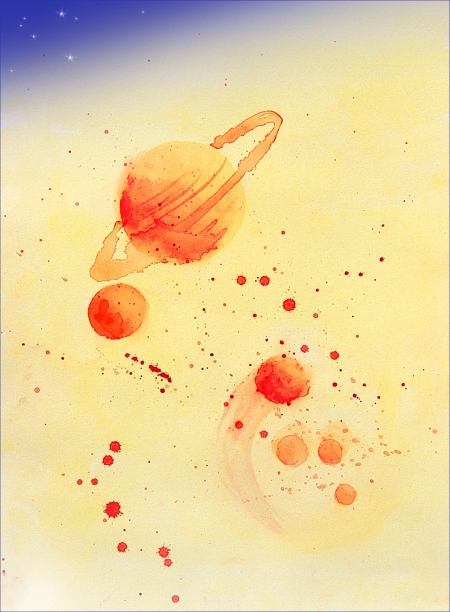COSMIC POTENTIALS
Using Advanced Techniques
By Sarah Kalvin
Planetary Dynamics introduces advanced techniques of astrological chart analysis to experienced astrologers as well as to those who are in the field of psychological behavioral therapies. It also offers cosmologists and astrophysicists insight into the dynamic relationship between the solar system’s activities and their corresponding earthly effects. The novice in the field of astrology will also be inspired to explore the depth and breadth of a more sophisticated approach to chart interpretation.
The techniques used in the blog are the contribution of Dr. Marc Edmund Jones who updated for the present generation of astrologers what the ancients compiled for the minds of an  era long past. The ancients displayed an impressive body of knowledge in the field of cosmology, but the current approaches to cosmos, mind, and human behavior have advanced significantly and necessitate a fresh paradigm that answers the needs of the 21st century mindset.
era long past. The ancients displayed an impressive body of knowledge in the field of cosmology, but the current approaches to cosmos, mind, and human behavior have advanced significantly and necessitate a fresh paradigm that answers the needs of the 21st century mindset.
In popular use today is an approach toward horoscope interpretation that primarily follows planetary rulerships through the signs and houses of a natal chart, and following that, an examination of transits and progressions to those planetary positions. This procedure is basically valid, however, there is much to be gained by including a broader scope of interpretive skills, such as the psychologically oriented Natural Disposition and Mode of Self-Integration, to name two of the sophisticated techniques found in Jones’ Essentials of Astrological Analysis.
Too often, Jones’ texts are marginalized because of their formidable content and complex sentence structures. Those who preemptively dismiss his work, however, often continue to use outmoded and limited analytical procedures as previously stated. Examining the pages of Jones’ numerous volumes in the spirit of research and open-mindedness will result in the discovery of a repertoire of techniques that enables profound and insightful interpretations. The practitioner is thus led to a more comprehensive understanding of how planetary configurations mirror human experience, and how in turn, life on Earth is reflected in the “stars.”
While using advanced techniques improves a practitioner’s skills, it is important to note that simply applying a system of refined tools will not substitute for a well-rounded comprehension of life’s myriad challenges and their solutions. A horoscope interpretation should not be overly dependent on the opinions of the creator of the methods used. Instead, astrologers must acquire on their own an awareness of the relationship between the details of the life of a client and their current planetary transit and progressed catalysts. This perspective results in the enhanced awareness that the interaction of the two seemingly separate components of life experience and planetary activity is actually an entangled, comprehensive whole. A perfectly honed hammer cannot of itself construct a fine edifice, yet the mastery of hand, along with a mature approach, promises a successful release of the potentials dormant within the tool or technique itself.
Although Jones’ texts are not in wide use, a significant appreciation and recognition for his contribution to astrology have been long-established by the American Federation of Astrologers. Throughout the history of the Federation, the prestigious Marc Edmund Jones Award has been presented to individuals who show excellence in the field of astrology.
The term Planetary Dynamics more accurately defines the study of the solar system than the term astrology. The synergy of planet configurations in their accompanying sign and house positions is usually the main focus of an examination of a horoscope. In antiquity, planet locations were identified by the backdrop constellations behind them in the Earth’s ecliptic. This is star-related Sidereal Astrology. It is known that the first day of Spring no longer correlates to the first degree of the constellation Aries, because of the Precession of the Equinox. The first day of Spring, at the Vernal Equinox, clearly refers to a tilt of the Earth toward the Sun that sparks our hemisphere’s regenerative powers with the start of new life and aspiration. Focusing on the Earth’s seasons to define the twelve signs shifts the identification from primarily zoological characteristics to the more realistic seasonal and atmospheric conditions. This is the Tropical Astrology system with its focus on the effects of the four seasons and their corresponding influence on humankind. Wherever possible, the term Signs of the Year will be used in lieu of the term zodiacal signs.
The word astrology literally refers to the study of the stars and comes from the Greek word Astron, meaning star. Although individual stars are occasionally mentioned when planets align near or on their locations in the ecliptic, a complete and thorough reading can be acquired without the use of star positions and their influences.
In essence, Planetary Dynamics is the study of the interrelationship of the planets as they orbit among their heavenly body neighbors in the solar system. They mirror daily activity on Earth in patterns of geometric configurations and perpetually enter and leave geometric aspects within the signs and houses of our natal horoscopes. We all possess the same essential attributes that make up human qualities, but our individuality is identified by the unique characteristics of the 12 signs, 12 houses, and 10 planets. Our differences are made possible through the varying mathematical relationships of the planets as they travel at different speeds in their path around the Sun. Each planet refers to a different activity of life, and the houses represent the twelve individualized circumstances of those human activities. The signs of the year define the nuances of creative self-expression. What makes us all unique and stand apart from others is a “snowflake” effect of planetary patterns; the way the signs, houses and planets of the chart form a Gestalt. No two horoscopes are exactly alike, and even when they are very similar, environmental conditions and heredity influence individual outcomes.
Transits and Progressions, respectively, are the real and abstract movement of the planets as they mark off the timing of events, opportunities for growth, and refinement of character and skills. These dynamic elements are catalysts for integral transformation and act as harbingers of change when we note their imminent arrival by identifying their positions in an ephemeris. Calmly anticipating these times of challenge and opportunity leads to greater self-realization and the capacity for successful accomplishment in our particular fields of interest.
The main purpose of astrology is to come to an understanding of the deeper meaning of our lives, which is especially invaluable for those who may be experiencing a spiritual crisis. Having the knowledge that one’s very intense mental, emotional, and physical challenges are related to major cycles of Planetary Dynamics can bring great comfort. Astrology gives confirmation that there is indeed a correlation between the activity of the heavenly spheres and events on Earth – and that we are not suffering distress without purpose and meaning. We simply need to submit to the process of self-evolution, and transformation will happen as a matter of course. Respect for the relationship between our lives and the great planetary cycles launches ordinary states of consciousness into a lifetime of spiritual adventure.

